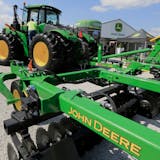The most important job of any plumbing system is to deliver clean water, and to keep that water clean from sewage and other contaminants. This makes up the first and second of the basic plumbing principles in the Minnesota State Plumbing Code, which read as follows:
A. All premises intended for human habitation, occupancy, or use shall be provided with a potable water supply which meets the requirements of the commissioner of health. Such water supply shall not be connected with unsafe water sources nor shall it be subject to the hazards of backflow or back-siphonage.
B. Proper protection shall be provided to prevent contamination of food, water, sterile goods, and similar materials by backflow of sewage. When necessary, the fixtures, device, or appliance shall be connected indirectly with the building drainage system.
A large section of the plumbing code is dedicated to protecting our potable water supply, so it's a good idea to check your own home for some of the most obvious violations and fix them. Truth-In-Housing Evaluations have a big focus on protecting the municipal water supply, and homeowners are typically required to repair conditions that could contaminate the potable water supply. I've already blogged about many of these conditions, so I'm pulling content from many of those past posts to put all of the information together into one post.
Check out this old video clip for some good information about the importance of protecting the municipal water supply. The first minute and forty-five seconds waxes on and on about who made the video possible, then they get to the actual content, so here's a link to 1:46 into the video: http://youtu.be/ETqvDrPYlsc?t=1m46s
As mentioned in the video, any potential cross-connections are potential sources of contamination.
Toilets
A cross connection between the water in a toilet tank and the potable water supply can be made if the toilet fill valve or toilet ballcock is improperly installed. There are three most common types of toilet fill valves; the old style ball-cock, the new style fill valve, and the clam-shell type. The ballcock relies on a floating ball to shut off the water supply when the water in the tank gets high enough. The approximate height at which the fill tube connects to the ballcock is considered the "Critical Level" line, and it needs to be at least 1" above the top of the overflow tube. The diagram below illustrates this.
By far the most popular type of fill valve today is the type with a float attached to the stem of the fill valve, which is shown in the diagram below. Again, the critical level line needs to be 1" abot the top of the overflow tube.



